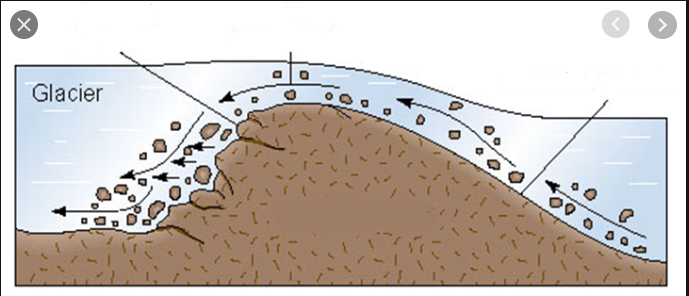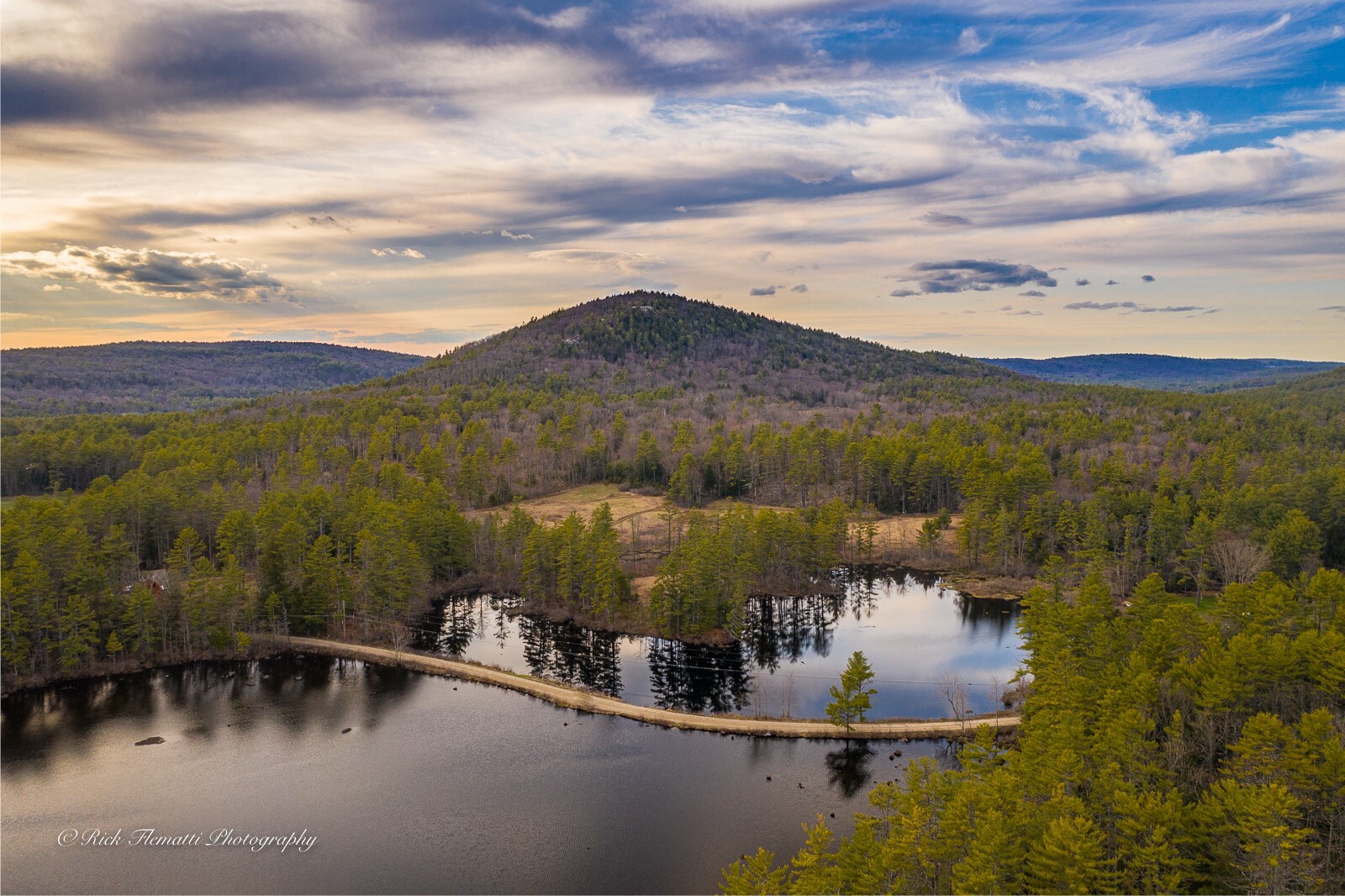Geology of Tully Mountain
To all that live and travel the trails, on and near the mountain, there are three types of rock that you walk on.
The first, is the rock around the mountain, called The Littleton Formation. Named after the same rock, in northern NH, it is a brownish, tan color, and is approx. 400,000,000 years old. This is made of sea mud, a Schist type rock today, and sand, a Chert Rock or Gniess type now. The Gniess or Chert was used by the Native American Tribes in this area, for Scraping Tools and with Arrow and Spear Points.


The second type of rock is, The Monson Gniess, a whitish colored volcanic rock approx. 320,000,000 years old, the first of the volcanic rock in our region. The Gniess was forced up between the rock that was present then. This Gniess makes up approximately 95% of the mountains mass. Minerals within this rock are: Alilnite, which maybe radio- active, Beryl, Garnets, Feldspar, which is most of the mineral mass, Limonite, Magnetite, Quartz and Black Tourmaline. This rock is well seen just north of the soapstone mine and on the south facing ledge.
The 3th rock is an Amphibolite Rock at approx. 280,000,000 years old, a gray – green in color, being at approx. 5% of the mountains mass. This was quarried for its impure soapstone, most likely used to make hand, and bed warmers and boot dryers. The pyrite, within the soapstone, made it unusable, for cooking pots, stoves and sinks. The quarry tailings, were used for foundation stones and bridge abutments. At the base of the quarry tailings, is the boom foundation, used to load wagons, with a 2 inch pivot pin still in place. The quarrying was done in the late 1700 or early 1800’s. Minerals in this rock are, Actinolite, Chlorite, Epidoite. Garnet, Gedrite, Hornblend, Limonite, Magnetite, Pyrite Crystals, Pyrite Mass, Soapstone, Talc and Black Tourmaline.
The glacial melt waters, carved out the mountain, and because of the resistance of the Amphibolite and Monsonite Rocks, a bigger valley formed to the east and south, when the water level was higher and the Littleton Formation, being, less fracture resistance, washed away faster.
The Native American Tribes used the mountain as a look out location. A rock mound there told the Tribes, a village was located near- by, perhaps near the past Table Factory. The Tully River has sites that the Native Tribes would fish there in the spring and fall.
